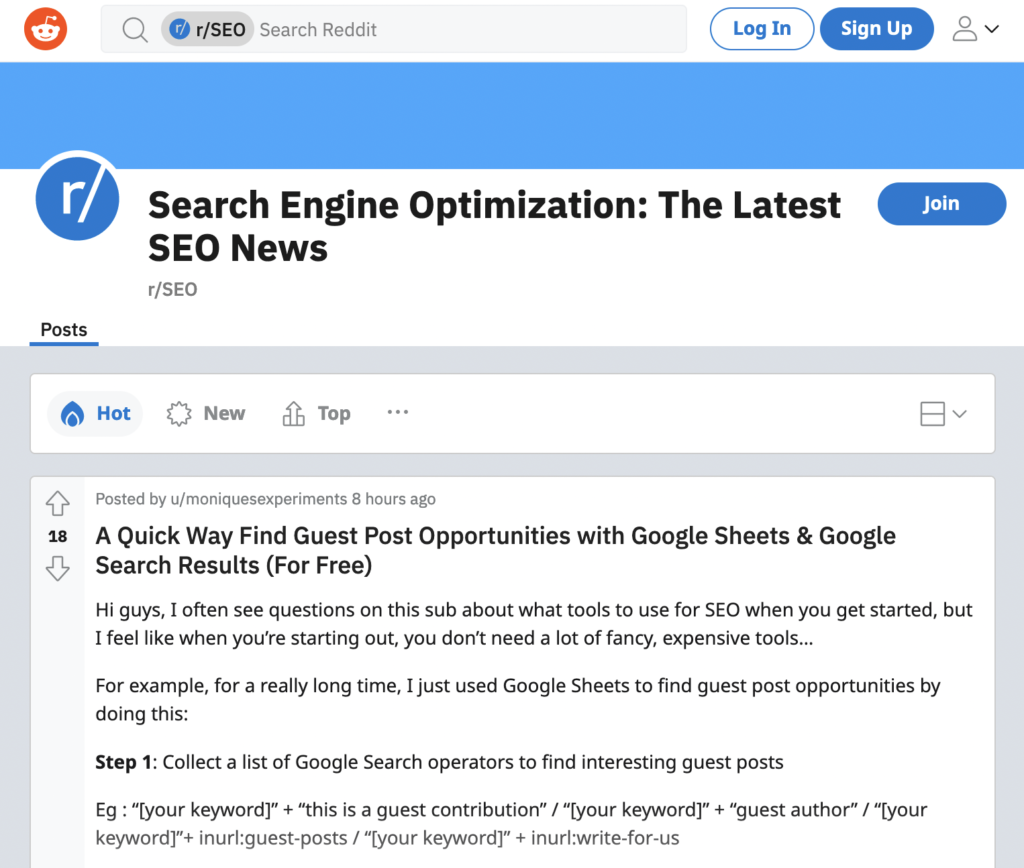User-generated content (UGC) is one of the best tools you have for keeping customers engaged in your site without requiring much maintenance. Two-thirds of consumers say it’s important for brands to provide them with personalized experiences. UGC is one of the most personal content types you can create. It’s created by users for other users. That also means that you don’t have to worry about producing or maintaining that type of content. You may need to do some moderation if you’re worried about troublesome users, but that will be minimal to the effort of producing content yourself. However, you need to give users a starting point.
The Creative Dilemma
Open-ended user-generated content often fails to give the audience a proper direction. All of social media already exists for open-ended content. If people want to make open-ended content, they’ll create it somewhere else. You want your content to have a specific purpose so people will be motivated to contribute. The question is: How do you create a specialized niche for sourcing content ideas from your audience? You want to keep discussion driven and consistent without causing repetition. There are many approaches for you to pull this off effectively. We’re going to cover the ways you can source your content ideas below.
The Importance of UGC
If you want to know how to properly source your user-generated content, you first need to understand the importance of it as a search engine optimization (SEO) tool. To start, there are two primary types you should know.
Direct Response
Direct response content is one where you communicate directly to the audience. A good example is feedback requests. You create a broad or specific feedback thread for a part of your site, and users can submit their feedback for you and other customers to see. This kind of user-generated content is valuable because it creates a stronger relationship between your company and its customers, which will directly increase brand loyalty. Making feedback public creates an appearance of transparency, which will further boost your reputation amongst customers.
Indirect Response
The other type of content is an indirect response like you’ll find on most social media. You open a forum for discussion where users can create posts on whatever topics they like. Other users can comment to create a more in-depth conversation. This type of content doesn’t need to be open-ended, however. While you still give power to users to create their own posts, you can have guidelines for post topics. So, if you want user-generated content for a new line of phone accessories you’re selling, you can open a discussion area strictly dedicated to that.
SEO Value

With these two types of content, you can improve your company’s SEO efforts. People who want to learn about a particular topic may look for a discussion forum on Google. If you have that content available, it will lead more potential customers to your site. If anything, user-generated content is more likely to get people buying from your site than actual product results. Data shows over 80% of users regard UGC as influential for their buying decisions. An SEO strategy without it will be lacking in its effectiveness.
Content Value
UGC isn’t just valuable from an SEO perspective. It can also reveal new insights for all other content for your site. Through UGC, you can see the types of topics users want to talk about, and the problems they have within your industry. If these don’t line up with the slate of content you already have available, you have an opportunity to increase audience appeal by reworking that content. Your curated content shouldn’t be one-to-one with user-generated content, but it should encompass a similar field of interest to capture your audience’s attention.
Sourcing Methods
Now that you know the definition and value of UGC for SEO and content in general, you can start covering methods to creatively source that content.
Forums
Forums exist for users to create discussion posts where others can comment, leading to a full conversation. The two primary ones to look through are Reddit and Quora.

Reddit is an anonymous content posting site that is the most used social media behind Facebook, Instagram, Twitter, and TikTok. The entire site is built off user-generated content, with users creating groups for different topics known as subreddits. Each subreddit has its own guidelines and moderation to manage its content. Within that subreddit, users will have a specific topic they are allowed to make posts on. There are a huge amount of subreddits out there to look through. Odds are, there’s more than one already dedicated to your industry. Look through the relevant subreddits to see the topics people are talking about within your industry.
Quora
Quora works similarly to Reddit, but its user-generated content is often in the form of questions and answers rather than allowing users to post whatever they want. The amount of content you’re going to see covered on Quora won’t be as broad for this reason, but you can still get a concise view of the questions people are asking within your industry. If you can guide your UGC toward these question topics, you’ll attract future customers who have the same question.
Customer Feedback
Customer feedback is a form of direct user-generated content where you ask customers to give their feedback on your site or products. Whether or not the responses are public is up to you, but as we’ve covered, the more transparent you are, the better your reputation will be. Based on your customers’ responses, you can see directly where their frustrations within your industry are. From there, you can tailor more UGC to respond to those frustrations. Alternatively, you can just ask your customers what they’re interested in and want to see more of from the industry.
Integrating Social Media
You can integrate your customer feedback with other user-generated content on social media for the best results. Make a post asking for feedback on your Twitter, for example, and you can get increased exposure as people share you through different social media channels. Any links or reposts will get much more attention than content directly on your website and offer an easy platform for users to comment. Not to mention, social media is simply a valuable tool for your company to take advantage of, period. Data shows 78% of salespeople using social media outperform others.
Sales and Customer Support
If you don’t want to create personal relationships with customers to forge ideas for user-generated content, you still have options. One of those options is using internal teams that work with customers. That can be customer support, sales, market research, or any other teams interacting with customers. You can call a team meeting to ask them where they identify common pain points for users or other feedback. There’s a good chance they’ll have some ideas you can use. Remember to be organized when you do this. Send an agenda of your questions beforehand so the team can prepare answers. Take a lot of notes on what you learn.
Trending Topics

One way to create user-generated content is simply to see what’s trending around the internet and hopping on the bandwagon. If you’re already social-media-savvy, you can ideate trends without having to put in much effort. If not, there are a variety of tools for locating trends. The best one is, aptly named, Google Trends. With this tool, you can see the most frequently searched for items around the internet. You can also use Google News to see what journalists in the industry are talking about, or YouTube trending to get an idea of what other content creators want.
Moderate Your Trend Usage
While trends are a super useful tool for creating user-generated content, you should be careful not to rely on them too heavily. Remember, trends are happening all over the internet. If you can identify a trend, your competitors can too. You don’t want to run more content where the market is already saturated with it. When you do pick trends, try to put a unique spin on them to keep them fresh for site visitors. You don’t want to be the thirtieth site to cover a trend, you want to be the first site to take a new angle on it.
Review Best Content
If you already know what’s working for your site, then you might as well use it for your user-generated content. Take a deep dive into your best content from the past few months or year and see if it would be possible to guide discussion towards those areas. The best way to do this is to identify a common topic that hasn’t been fully covered, such as if you’ve run a series on winter fashion but don’t have anything that talks about holiday-themed sweaters specifically.
Or, there could be a type of format you haven’t used. The most popular format for user-generated content is quote posts. If you don’t have anything related to winter fashion, you can start looking for quotes and suggest them to visitors for future content.
Comments

Comments are a gold mine for finding dedicated discussions on any number of topics. Not only will they dive deeper into the topic of a post, there’s a good chance they can take a tangent to completely different subjects that would also be useful to cover. It can be slightly more tedious than just looking through the posts themselves, but you may be surprised about the insights you get from the comments. Comments will often give a more detailed, opinionated take on a subject that could offer a unique direction to your content. If you want to pay attention to what people are saying, you have to pay attention to all of it.
Social Listening
Social listening is a user-generated content practice that takes a more passive approach. Rather than sorting through many different social media posts on your own, you create accounts that automatically alert you about popular posts. You’ll get a snapshot of the most popular topics without having to put in too much effort and can use many different tools for this.
If you want, you can also plant content anonymously and listen to see how other people respond to it. People will respond differently to another person instead of the company. This may be a better opportunity to get their real thoughts.
Google Search
Taking a look at Google searches is another way to come up with user-generated content. If you find out what people are searching for, you can curate discussion boards that cater to those searches. Google Search Console has many features built specifically for monitoring common searches. Or, you can try searching for topics within your industry yourself. Google will autocomplete common queries and list related searches underneath the search results. Following the rabbit hole of Google links can give you a well-informed overview of all the searches happening within your industry.
Reviews
The last method you can use to come up with user-generated content is reviews. Reviews, positive or negative, have something important to say about your site or product. Look at what users like, keep a close eye on what they don’t like, and use that to ideate potential UGC topics. Pay close attention to 1-star reviews. Many people will disregard these as unhelpful but they still have some information you can improve upon. Also, check multiple sites for reviews. Look up your business on Google, Amazon, Facebook, and other locations to get a larger sample size for your reviews.
Get Creative

When in doubt, you can always get creative with your user-generated content. Ideally, you’ll want to put a creative spin on any of the ideas you source from the above methods. You can always stick with what works and run with whatever ideas you have. But, the more creative you get, the more engaged you can keep your customers since your content will be unique. Put in a little creative effort, and your UGC efforts will have much better results.
For more SEO information and services, explore the rest of what Best SEO has to offer.

